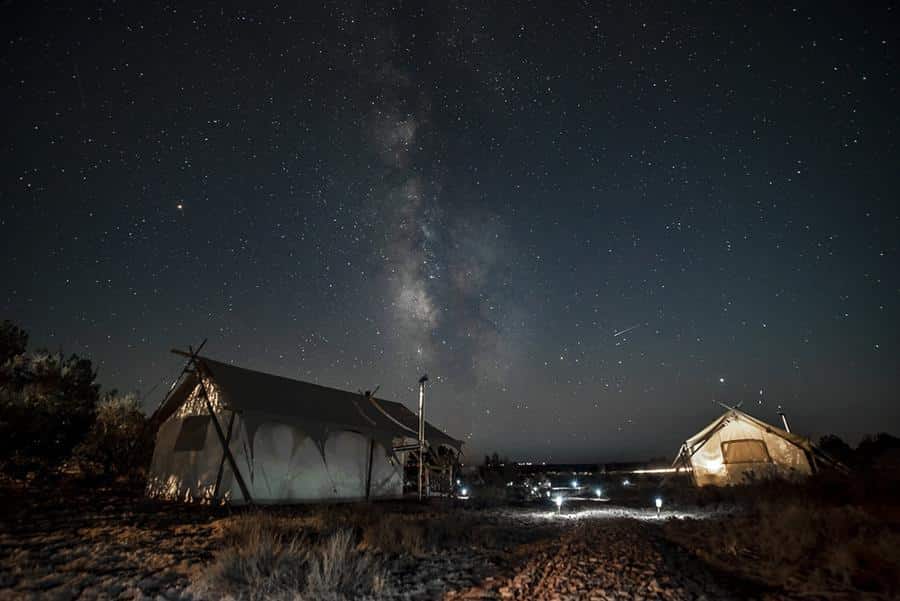Exploring Arizona responsibly

Did you know that approximately 85% of Arizona’s land comprises national forests, national parks, recreation and wilderness areas, wildlife preserves and Indian reservations?
This includes 4.5 million acres of official wilderness land, 3,928 mountain peaks, 11.2 million acres of National Forest, 11,399 archeological sites, 44 national historic landmarks, spread across Arizona’s state and national parks.
The Arizona Office of Tourism and the Leave No Trace Center for Outdoor Ethics work together to promote sustainable tourism practices.
Learn how visitors can help preserve the wild beauty of Arizona and minimize the carbon footprint.
Let there be (sky) Light
Southern Arizona’s clear nights and abundant mountain ranges attract astronomers from all around the globe. The International Dark Skies Association is headquartered in Tucson. The Village of Oak Creek, Camp Verde, Flagstaff, Fountain Hills, Sedona, Cottonwood and the Kaibab Paiute Indian Reservation are all officially designated dark sky regions or communities. Throughout Arizona, visitors can marvel at the skies above, this is due to long-standing rules which ensure that night lighting does not interfere with nearby astronomical observatories. Mt. Graham International Observatory, situated on the upper reaches of the 10,500-foot peak in the Pinaleno Mountain is home to the Max Planck Institute’s Heinrich Hertz Submillimeter Telescope, the most accurate radio telescope ever built.
Protecting Ancient Tribes
Of all the states in the US, Arizona is home the most Native American tribes and has the largest percentage of its land designated as tribal land. Twenty-two Native American tribes live in Arizona from the Hopi, Hualapai and the Havasupai tribe to the Kaibab-Paiute, Yavapai-Apache and Navajo Nation. The Navajo Nation is the largest and spans 27,000 square miles across the states of Utah, Arizona and New Mexico, but its capital is in Window Rock, Arizona. Throughout the state, the local arts and culture are supported and promoted in order to preserve the state’s rich cultural heritage preservation. An example of this is the Hopi Arts Trail, a way for visitors to connect with artists and galleries on the Hopi mesas in northern Arizona.
Preserving the Sacred Land
Arizona is home to a wealth of natural wonders. In order to preserve this, Arizona limits the number of visitors and advanced booking is necessary. These measures are in place to ensure that more people can enjoy Arizona’s stunning landscapes for years to come and that future generations are able to experience the beauty of the state.
The Wave, Vermilion Cliffs National Monument: Permits to this stunning monument should be applied for four months in advance.
Antelope Canyon: Guided tours are required to visit the magnificent Antelope Canyon, located on private land within the Navajo Nation.
Conserving Arizona’s Ecosystems
Arizona has six distinct ecosystems—each with varying climates, wildlife and plants. Several charitable organisations and government agencies help protect and preserve Arizona’s ecosystems. The Arizona Office of Tourism and the Leave No Trace Center for Outdoor Ethics have come together to encourage sustainable tourism across each of Arizona’s landscapes and distinctive destinations. Together they promote sustainability through education, with resources for industry partners, visitors and children. Appreciate AZ also provides free clean up kits to all travellers from its Visitor Information Centers (with 700,000 pounds of rubbish picked up so far) and promotes keeping nature wild through its seven Appreciate AZ principles, including respect, care and planning.
 United Kingdom
United Kingdom United States
United States Asia Pacific
Asia Pacific












































Dozens fall ill in P&O Cruises ship outbreak
Turkish Airlines flight in emergency landing after pilot dies
Boy falls to death on cruise ship
Unexpected wave rocks cruise ship
Storm Lilian travel chaos as bank holiday flights cancelled